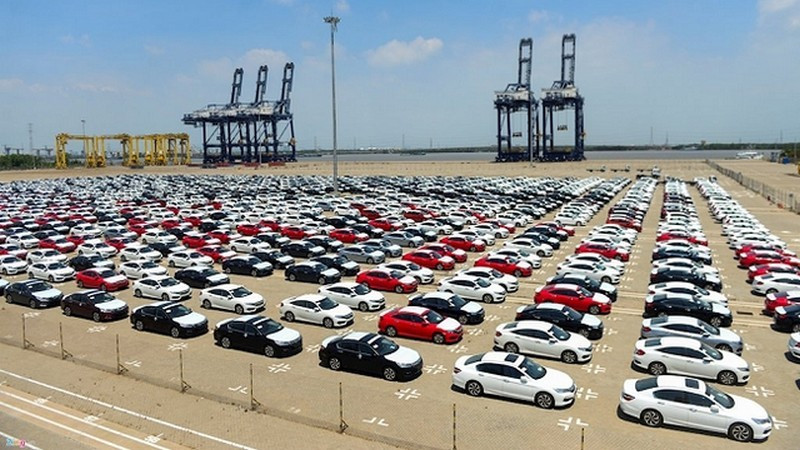Vietnam’s Import Statistics for Automobiles: Unveiling Insights
Vietnam’s automotive industry witnessed notable dynamics in June, as per the latest statistics released by the Customs Department. The country imported over 18,800 vehicles of various types, totaling approximately $407 million in value. A standout trend was the surge in imported commercial vehicles, reaching 2,732 units, a 40% increase in volume and a 35.2% rise in value compared to May. This spike was predominantly driven by imports from two key sources: China and Thailand.
In contrast to the commercial vehicle segment, passenger cars with fewer than nine seats experienced a slight dip, totaling over 14,000 units. Similarly, other vehicle types witnessed a decline, with only 2,067 units imported, valued at $84.2 million, reflecting a decrease of over 27% in both volume and value month-on-month. Despite the dominance of Chinese-origin vehicles, accounting for 94% of this category, the downward trend suggests a cautious approach by businesses or shifting domestic demands.
Accumulated imports for the first half of the year painted a positive picture. By the end of June, Vietnam had imported a total of 102,817 completely built-up (CBU) units, marking a significant 38.3% year-on-year increase. Passenger cars with fewer than nine seats dominated this category, totaling 78,345 units, a 29.4% increase. Meanwhile, commercial vehicles witnessed an impressive surge, reaching 12,362 units, a whopping 124.3% year-on-year growth.

Vietnam’s imported car market thrives with a 38.3% year-on-year growth, totaling 102,817 units in the first half of 2025.
Beyond completely built-up units, automotive components and parts played a pivotal role in Vietnam’s automotive supply chain. Imports of these goods reached $2.64 billion in the first six months, a 28% increase year-on-year, with China remaining the primary supplier, followed by Thailand, South Korea, Japan, India, and Indonesia.
The robust growth in commercial vehicle imports, coupled with the substantial volume of imported components, underscores the rebounding logistics, construction, and transportation sectors. It also reflects businesses’ optimism about economic recovery and public investment in the latter half of the year.
With the current momentum, 2025 is anticipated to set a new record for automobile imports, especially as the domestic market demands a diverse range of products, high performance, and fuel efficiency.
Turning to domestic consumption, the Vietnam Automobile Manufacturers Association (VAMA) reported total market sales of 31,977 vehicles in June, reflecting a 9% increase from May and a substantial 20% year-on-year growth.
For the first half of the year, domestic automobile consumption reached 163,021 units, a 21% year-on-year increase. This growth encompassed an 18% rise in passenger car sales, a 28% increase in commercial vehicle sales, and a 28% surge in specialized vehicle sales compared to the same period in 2024.
Among VAMA members, Toyota maintained its leading position in sales, followed by Ford, Mitsubishi, Mazda, KIA, and Honda.
The Master Wordsmith: Crafting Authentic Economic Demand
Accelerating the disbursement of public investment capital will stimulate consumption of domestically-produced goods and services. Accompanying this should be robust fiscal policies that support the production of goods and services and encourage consumption, creating a virtuous cycle of production and circulation, and generating genuine demand within the economy. This is the recommendation of experts to boost growth in the last two months of this year and into 2024.
“Embrace Vietnamese Products to Boost Economic Growth”
Encouraging aggregate demand while supporting supply is the vision outlined in Directive No. 29/CT-TTg, dated August 27, 2024, on stimulating consumer demand, assisting production, business, and domestic market development. This directive was recently issued by Prime Minister Pham Minh Chinh. The expectation is that this will extend the period of growth for the Vietnamese economy.
The Surprising Lending Speed of Ho Chi Minh City Banks
“Hanoi’s bank credit growth has yet to reach its expected breakthrough as businesses continue to face challenges. Despite this, there remains an air of cautious optimism within the city’s financial sector. With a resilient economy and a dynamic business landscape, the potential for a surge in credit growth is ever-present, and banks are poised to play a pivotal role in facilitating this anticipated upswing.”
Prime Minister: Exploring Dedicated Consumer Credit and Banking Services
Let me know if you would like me to tweak it or provide any additional variations.
“The Prime Minister has requested that the State Bank of Vietnam directs credit institutions to develop dedicated consumer credit and banking services. This includes strengthening lending for personal and consumer purposes, thus enhancing the overall consumer experience and financial accessibility.”









































